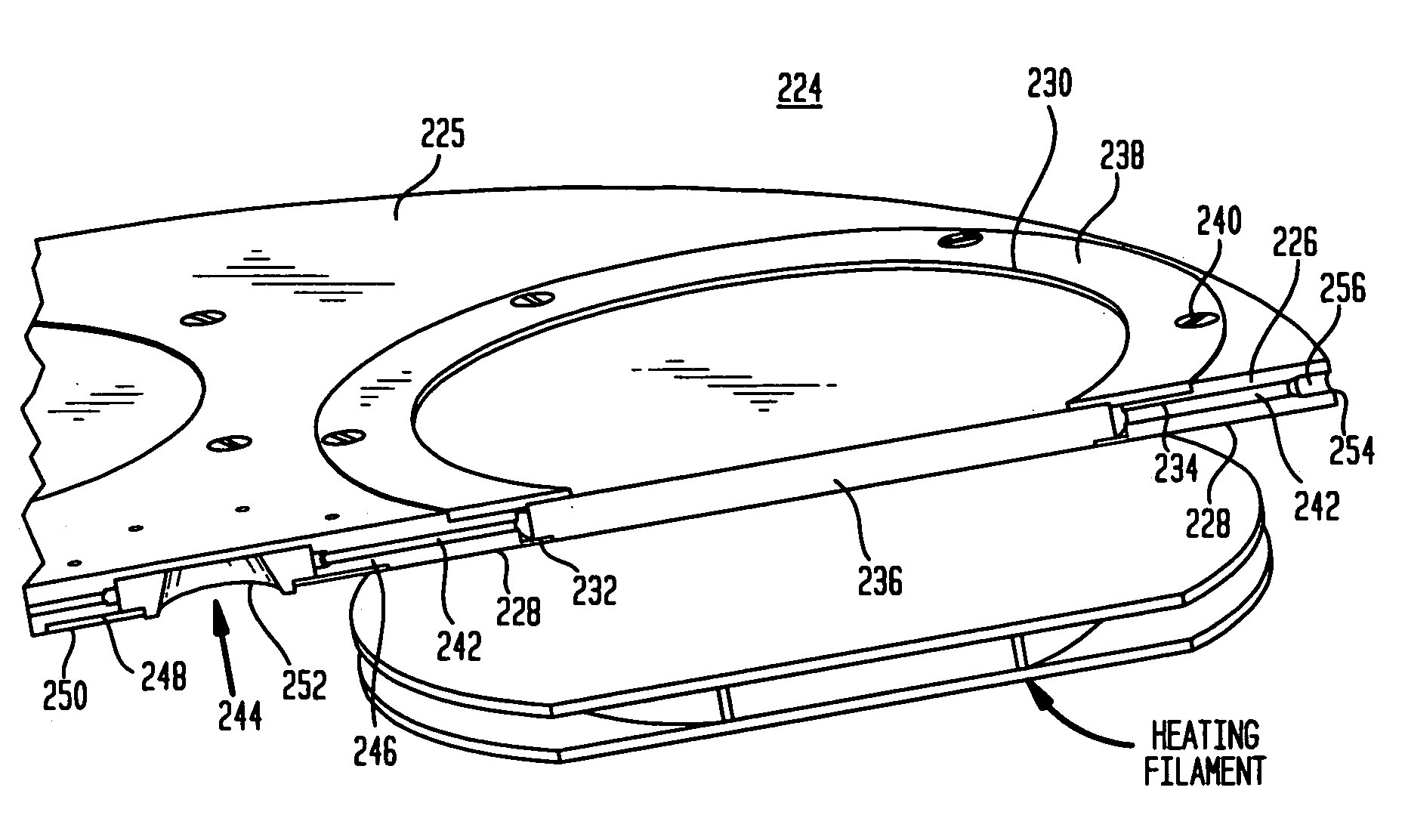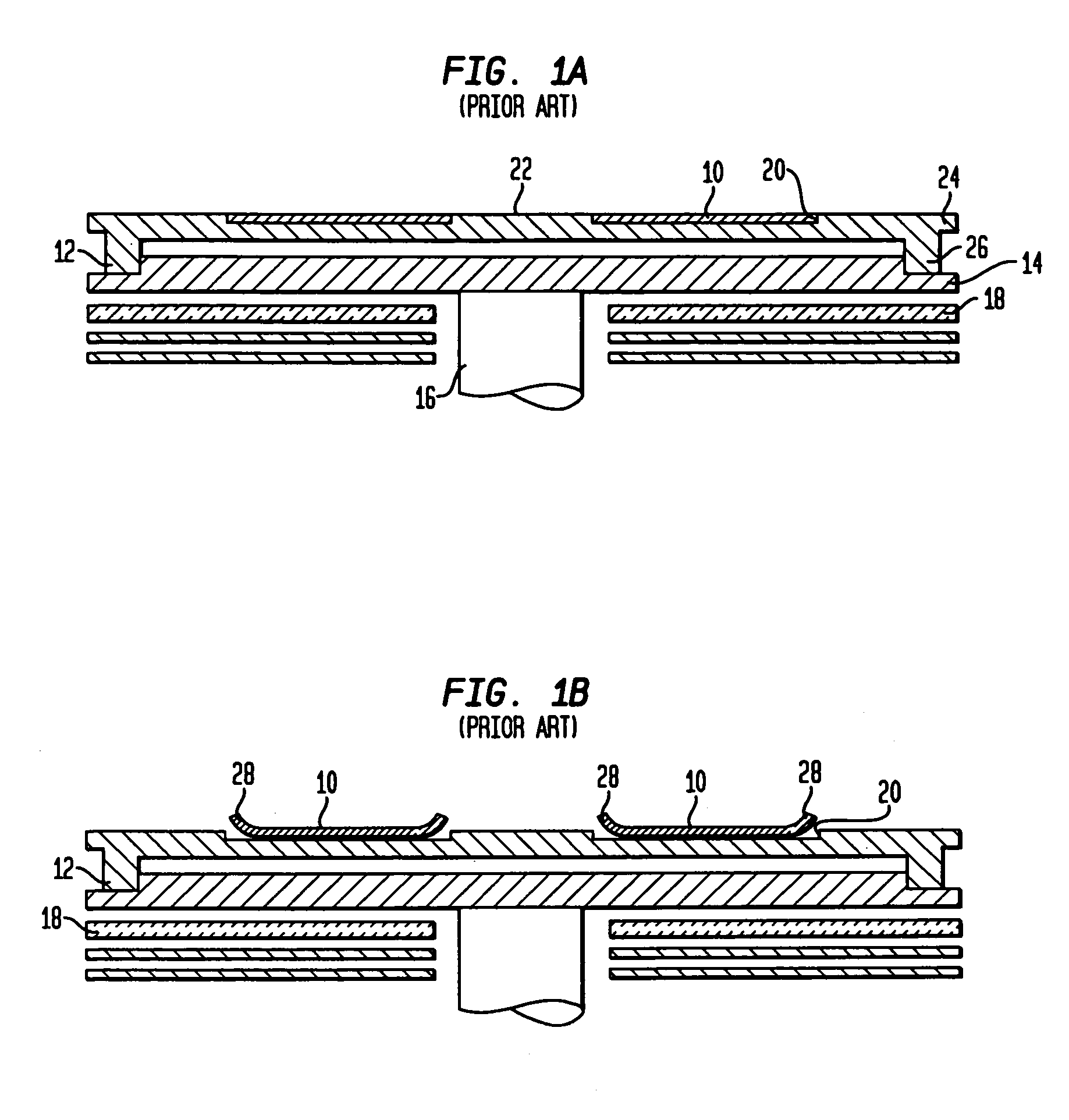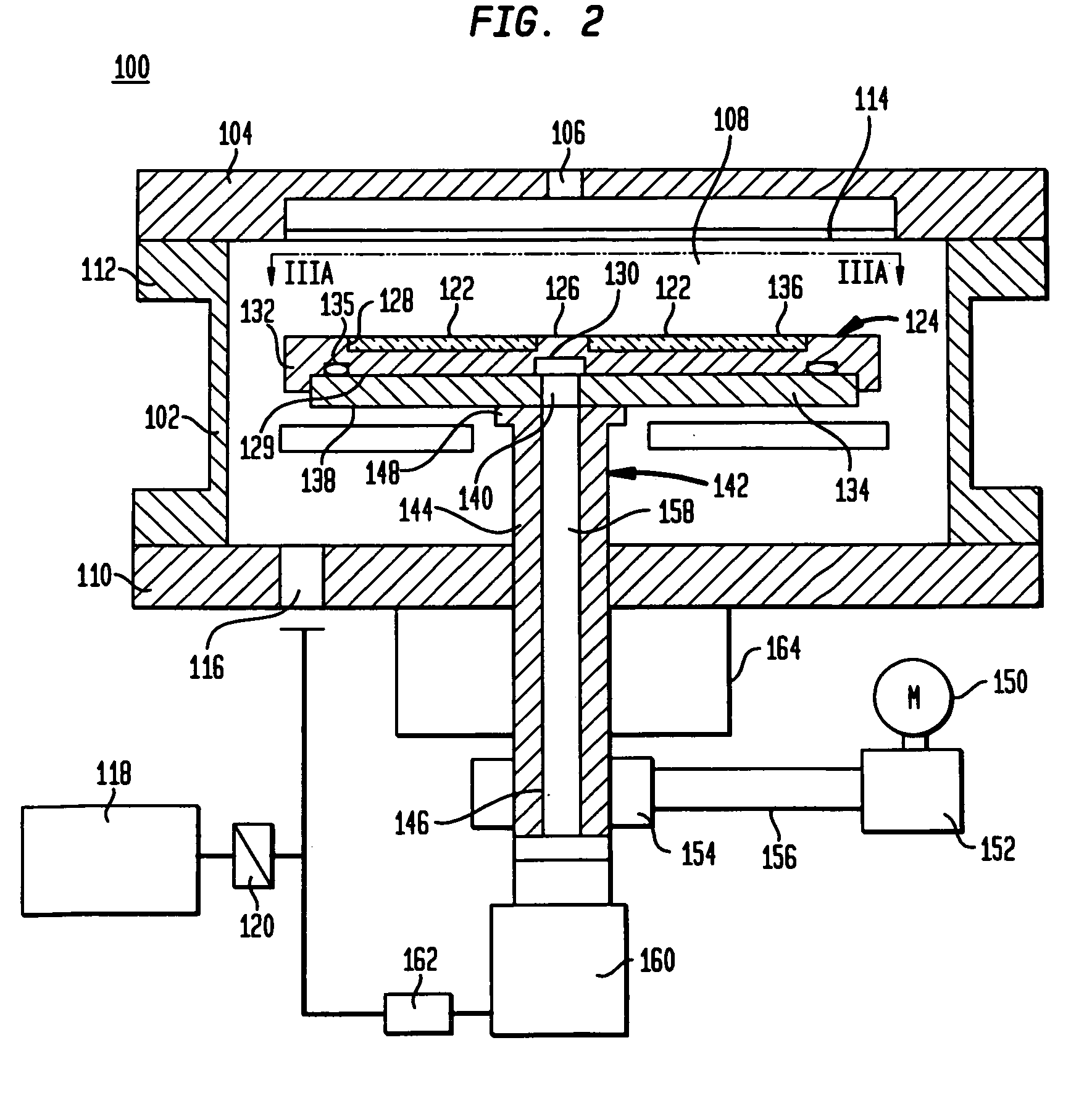Wafer carrier for growing GaN wafers
gans, which is applied in the direction of crystal growth process, chemically reactive gases, coatings, etc., can solve the problems of inability to meet the requirements of gan wafers, non-uniform temperature, and inferior quality of the layer(s) deposited along the peripheral portion of the wafer. , to achieve the effect of improving the quality of the resultant semiconductor wafers, and reducing the quality a gan wafer carrier and gan wafers, a gan wafer carrier and gan wafers, a gan wafer carrier and gan wafers, a technology of gan wafers, a technology which is applied in the field of gan wafers, which is applied the quality of gan wafers, and the application in the a gan wafer carrier and gan wafer carrier and gan wafer carrier and gan wafer carrier and gan wafer carrier and gan wafers, which is applied in the field of gan wafers, which is applied in
- Summary
- Abstract
- Description
- Claims
- Application Information
AI Technical Summary
Benefits of technology
Problems solved by technology
Method used
Image
Examples
Embodiment Construction
[0038]FIG. 2 shows an apparatus for growing epitaxial layers on wafers. The apparatus includes a deposition chamber 100 comprising a side wall 102, and a top flange 104 including one or more openings 106 for introducing reactant chemicals, such as reactant gases, into an interior region 108 of deposition chamber 100. Deposition chamber 100 also includes a bottom-sealing flange 110. The deposition chamber 100 is made of stainless steel with the top and bottom flanges 104 and 110 being sealingly engaged with sidewall 102. The reactant gases introduced through the opening 106 in top flange 104 are generally uniformly distributed by one or more showerheads 114. The reactant gases interact with one another inside deposition chamber 100 to form epitaxial layers upon wafers. After the reactant gases interact with one another and are deposited atop wafers, the waste material is removed through an exhaust 116 extending through bottom-sealing flange 110. In certain embodiments, the waste reac...
PUM
| Property | Measurement | Unit |
|---|---|---|
| porosity | aaaaa | aaaaa |
| temperature | aaaaa | aaaaa |
| temperature | aaaaa | aaaaa |
Abstract
Description
Claims
Application Information
 Login to View More
Login to View More - R&D
- Intellectual Property
- Life Sciences
- Materials
- Tech Scout
- Unparalleled Data Quality
- Higher Quality Content
- 60% Fewer Hallucinations
Browse by: Latest US Patents, China's latest patents, Technical Efficacy Thesaurus, Application Domain, Technology Topic, Popular Technical Reports.
© 2025 PatSnap. All rights reserved.Legal|Privacy policy|Modern Slavery Act Transparency Statement|Sitemap|About US| Contact US: help@patsnap.com



